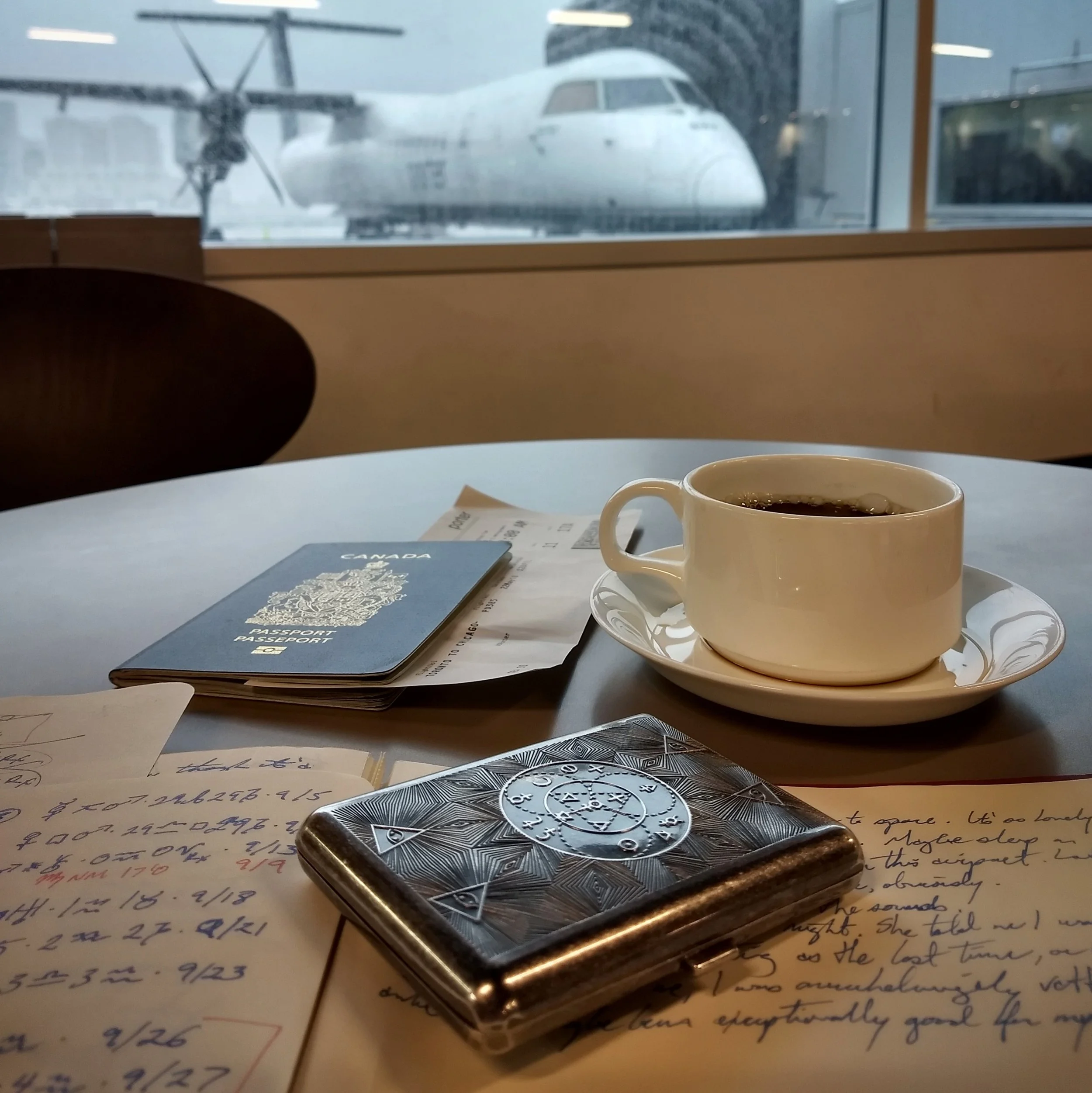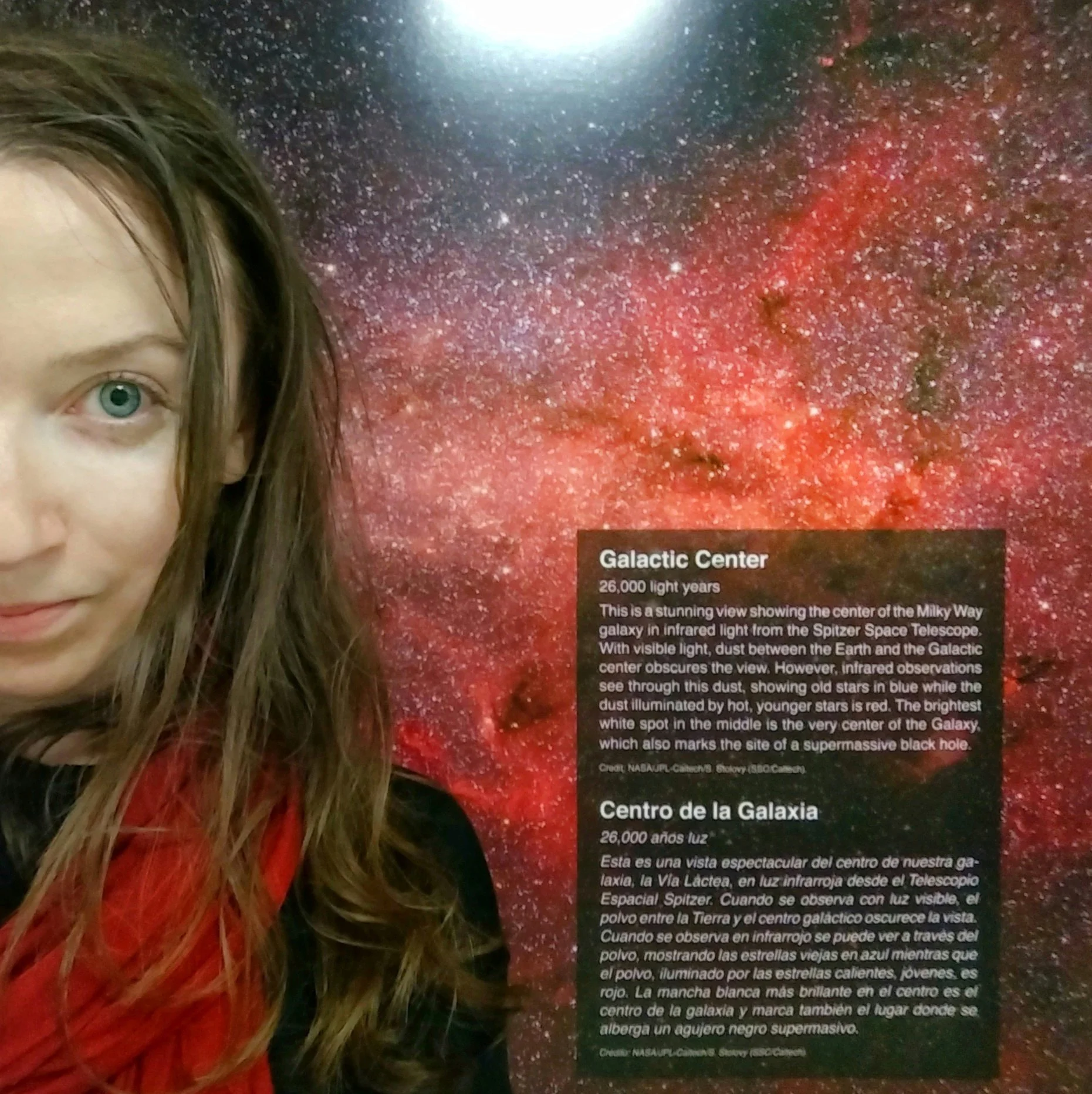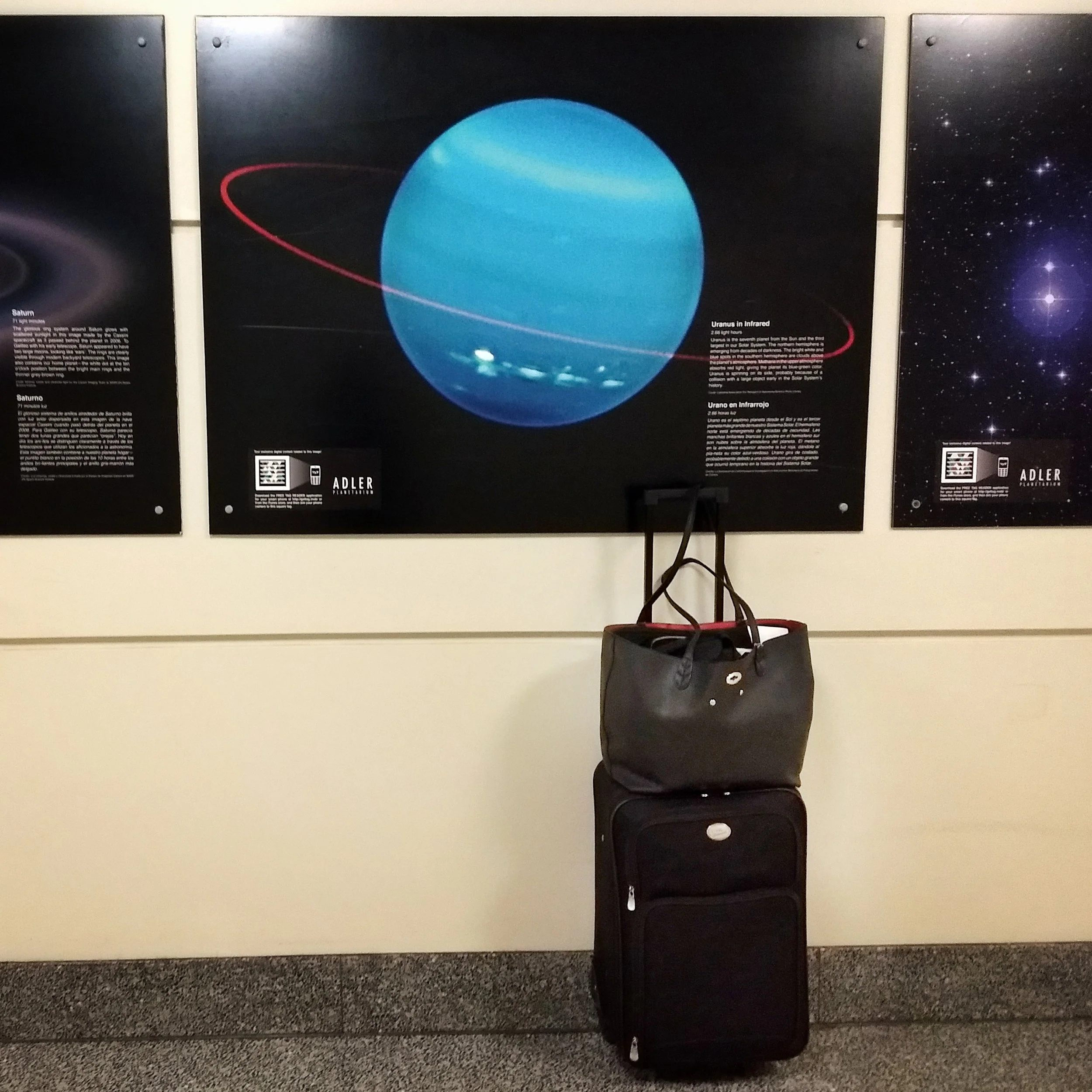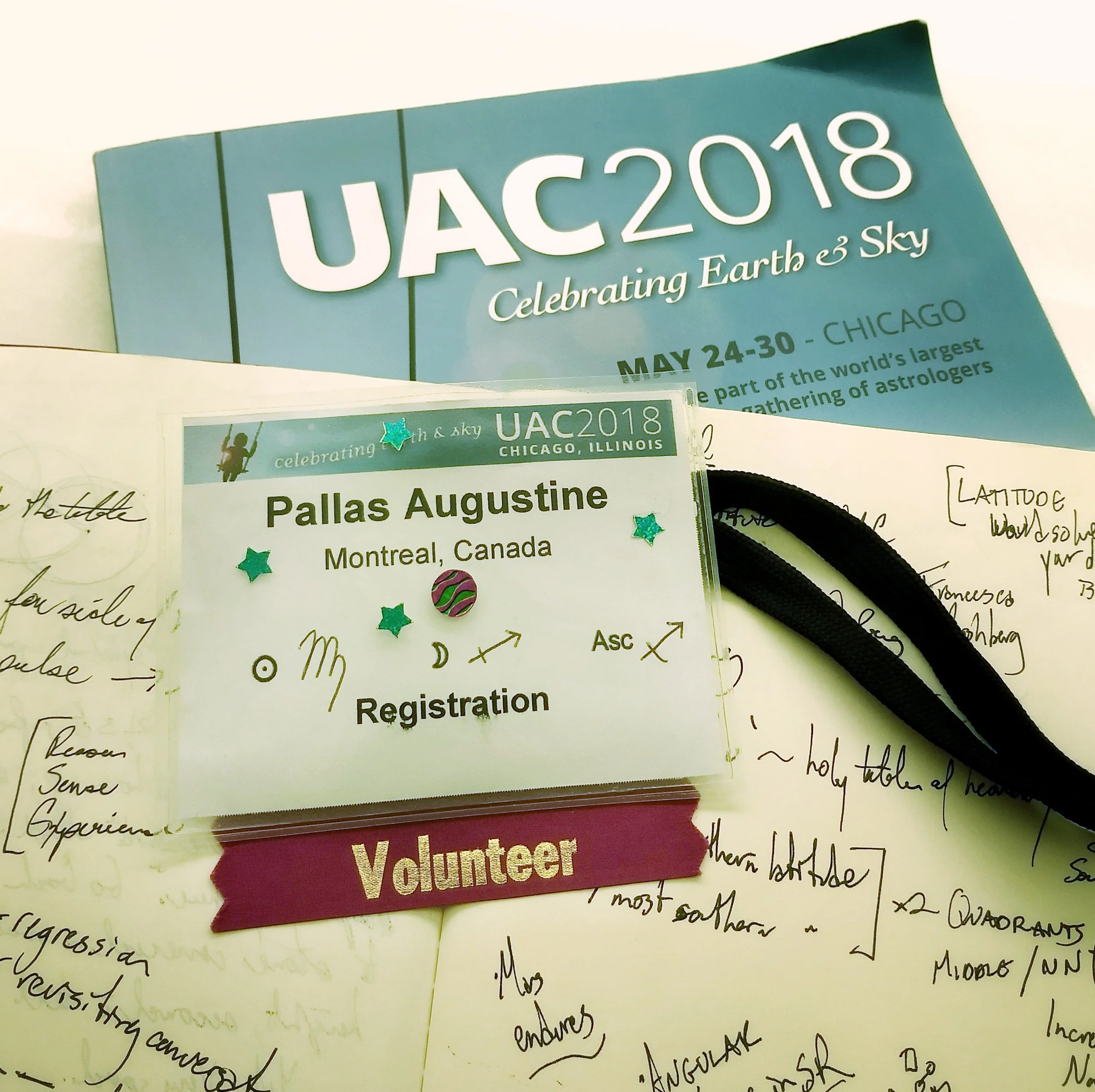The Winds and the Hours: Reflections on the Magic of #UAC2018
On the plane back from the 2018 United Astrology Conference in Chicago, after an hour of watching me draw circles and lines in my notebook, Mike the pension fund manager finally inquires what it is that I'm doing. I’m scribbling about noviles, declination, the Lot of Daimon. His question is an abrupt and appropriate return to the “real world.” I point out the window to the Moon, rising yellow above the storm clouds, with Jupiter bright above, “How does that make you feel?"
Mike has never met an astrologer before. He asks the most standard but astute question: “Okay, but what comes first, the stars or the stories?" I eschew the simplest answer: "It's a timeless co-creative process between human consciousness and the divinity of the cosmos.” I opt for, "I just spent a week with 1500 other astrologers asking the same thing.”
UAC2018 was a Gemini-Sagittarius heaven, an overload of information and inspiration, the endless conversations connecting us across distance and through the depths. I’m as Mercurial as I am Jupiterian. As much as I'm devoted to and identify with the details, it's the overall vision, the arc of the arrow, that fuels my restless heart.
This writing is an offering to my community, a grateful attempt to articulate and synthesize one UAC experience, shared by at least a few, and put words to at least one small corner of our world. As astrologers, so many of us work alone, with our clients, our books, our research, our gardens. To be gathered among others, among so many others, is an enlightenment and a rejuvenation. Such gatherings encourage us to ask better questions, to put into words that seeking so many of us serve and breathe.
Contemporary astrology is a tool of literacy, both linguistically and technologically. Despite the prevalence of techniques reliant on knowledge of the motions of the solar system and our acceptance of ‘as above, so below,’ there is still a danger of forgetting, amid all our paper and screen and sigil and sky, that we deal with an infinitely complex non-linear irrational negotiation between animation and eternity, that we deal in magic.
My welcome to the Chicago Midway Airport
Much of UAC2018 was devoted to deepening our access to an animating (and reanimating) cosmology, as well as solidifying the ground on which we stand to reach. The past week, I wandered through a steady stream of talks that were reminders of the multi-dimensional motion of the skies. It is sometimes tempting to perceive and read our charts and ephemerides as more static and textual than we deeply know they are.
When we’re shuttered in city walls, it is often necessary and more convenient to track only our analogs and metaphors. In her talk, “Adding Star Stories,” Bernadette Brady describes the parans of the angles and fixed stars as the place “where spirit meets matter.” To imagine the most minute barometer of experience, and extend our envisioning to the deep time of the stars is to witness “the ascent of the soul and the descent of the divine." We move only against their steadfastness. We rise and fall alongside.
Tony Howard's research into out-of-bounds planets, Gary Caton’s work on planetary latitude and retrograde loops, Michelle Gould’s articulation of Mesopotamian lunar nodal tracking were just a few of the methods of deepening and enlivening I witnessed. Mark Jones, in his talk “The Arc of the Infinite: The Planetary Nodes in Individual and Collective Evolution,” brought forward Dane Rudhyar’s contention that the shifting planetary arcs are, in fact, more revealing of a soul’s being and becoming than the zodiacal placements themselves, even if the placements have been more readily comprehensible. He quotes Rudhyar, “The entire orbit of that planet is a cosmic fact that transcends sense-perception.” The planetary nodes illuminate our individual connections to the collective archetypes we inhabit, that push us to search the sky and for each other.
In Robert Hand’s talk, “Fate, Free Will and Contemplation,” a title which he amended to “Fate and What Is Up To Us,” he describes astrology as “the study of the World-Soul and how it relates to the individual soul.” We live in a moment when, with the accessibility of technologies of attention, we are able to better comprehend the complexities of planetary arcs, and the continued work with declination, the nodes, parans, and latitude are all part of this process. To be able to look further into our own sky, we may more clearly see the skies of our ancestors.
At UAC2018, I felt the winds of a zeitgeist, of a more commonly accepted return of Spirit to so-called Western astrology, perhaps no more obvious than during the live recording of The Astrology Podcast when Austin Coppock got cheers from the crowd when proposing a Planetary Magic track for the next UAC. The Association for Young Astrologers held nightly planetary rituals, gatherings of sense, smell, oratory, imagining, connecting to each other and our mythologies through shared space and devotion, through magic.
The re-enchantment of Western cosmology can be seen in the surge of popular astrological interest, the resurrection of the teen witch archetype, the increasing acceptance of spell work and talismanic magic, how border officials don’t even blink when I tell them I’m an astrologer, whereas it was often a shakedown when I was just an academic.
A great part of this re-spiritualization in Western astrology is thanks to the translation and intellectual work of Project Hindsight, and those many who take up the work of proving the necessity of rigourous astrological translation and historical and cultural research, providing firm ground upon which we can stand to reach further into the heavens.
To go back to technique, to cast charts by hand and eye, as our forebearers did, to find the correlations between their philosophies and their skies, allows us to see more of the enlivened cosmos through their eyes, and those who came before them. And here we are now, with multiple talks featuring the Daimon, by Dorian Greenbaum, Demetra George, Gray Crawford, Meira Epstein, and others I am surely missing. The prevalence of Plato’s Myth of Er, the Spindle of Necessity, and public invocations of the World-Soul are evidence of an increasing acceptance of Robert Hand’s proffered vision that the Western astrological chart is a testament to “the state of god, of god experiencing god,” outside any specific affiliation, non-Christian, Christian, or otherwise. We are participating, creating, believing with the planets and stars. Some of us never forgot, but many more of us are returning. We behold, and are beheld. We are in awe.
But awe is not enough to take back to our clients, to our communities. We live in uncertainty. We live in fall. With any re-enchantment comes a mourning for all that we have lost, and in looking at the mystery of a chart, we face the unknowable histories of the object we hold in our hands. The seeking can so often feel pointless. Richard Tarnas asks in the final lecture of the conference, “How does it feel to be scrounging around for your next century of existence?”
Our clients, our communities, are anxious. We feel deeply the threat of white nationalism, racist and transphobic violence, misogynist backlash, housing crises, reel from the mass displacement of children of violence, the smog that shadows the stars, the devastation of resource consumption, the longing for forests and animal life of the wilds disappeared, the dramatic consequences of storms bred from the oceans heated and scorned. Our clients come to us (and return to us) to acknowledge these uncertainties, to track their joys and their sorrows, to be reminded of hope, courage, confidence, to be (re)connected to spirit(s).
As evidenced at UAC, we live in a cultural remembering of the Platonic story of the soul, wherein she finds her Daimon, is cast her lots, is spun through Necessity, drinks of the River Lethe, the waters of forgetfulness, and is reborn. The forgetting soul lives in an echo of our 12th house, to ascend and be reborn, uncertain, unknowing, wandering for enlightenment, her Daimon the one who remembers and encourages her toward her destiny. What does it take to accept even a breath of destiny amid the ravages of our worlds, let alone illuminate our clients to see their own?
As astrologers, we know the chart to be a map, a metaphor, an imprint, an echo of the moment of birth, ensoulment, entrance, of forgetting. We can see so much in the spaces that are empty, in the dark, in the shadow. My favourite way to introduce clients to Neptune is to show how we can only know Neptune in the moments it bumps up against something else, hence why Saturn-Neptune contacts are often the most revealing. Like dark matter, like shadow, like destiny, we often only have access to Neptune when we can see where something is not. In Rick Levine’s talk, “Quantum Astrology and The Particle/Wave Duality: Understanding How Metaphysics Impacts Physics in Chart Readings,” he tells us, “Neptune is Jupiter freed from the limits of Saturn.” The liberation of Uranus allows us to go further into Neptune’s realm, to believe, to trust, to fantasize, and imagine. Shawn Nygaard, in his talk, “Neptune’s Immensities,” imparts us with a promise, that despite the dangers transcendence demands, “There is truth in Neptune.” If we can trust it. If we can believe.
The north node of Neptune is in Leo, the south in Aquarius, for our lifetimes and further in both directions. In the past year, we’ve shared another round of lunar node contacts to Neptune’s nodes. We are in a moment of archetypal enlivening of our collective Leo heart, our lion soul, our creative re-engagement with the cosmos, a blessing and light amid all the gravity of Capricorn, of the coming Saturn-Pluto conjunction which, as Mark Jones impressed upon us, happens on Saturn and Pluto’s south nodes.
A reckoning, perhaps, but surely a moment when a re-enchanted cosmos becomes a necessity, a renewal of belief that even if we have collectively forgotten our destiny, lost our courage, we may have trust and faith that there is spirit, there is Daimon, who has brought us here and brought us together. UAC2018 felt like a testament to this moment of being-brought-together, this shift of direction, this return.
My Sagittarius placements align with Uranus’ south node. Any mass seeking for meaning, of collective questioning, of shared imagining, makes me cry, even in public. The afternoon before the Marion D. March Regulus Awards banquet, I had a choice (or you know, I thought I had a choice, ha ha). Either I retreat to the hotel room for some neurotic Virgoan rituals of cleansing, stretching, breathing, enclosing, perfecting, or attend Jason Holley’s talk, “Virgo as an Archetype of Creativity, Loss, and Renewal.” My Sag won out and as I sat on the floor in the front row, I tried politely to hold back my tears. He spoke of the chart as pure potential, and the shift from Leo into Virgo as one of bringing that pure potential into form. But, he warns, the Virgoan process of perfection, of bringing spirit into matter, comes with a caveat: “You don’t get to bring your full potential here.”
As astrologers, we have highly articulated and developed tools to recognize potential. We find it in the charts of our clients, of eclipses, of elections. We see it in ourselves, and in those we love. We might even see it in politicians sometimes. The ability to see potential brings a propensity for disappointment. With our reliance on data prediction and empiricism faltering, with Neptune clouding our visions, we as astrologers are being forced to muster faith, for the sake of our future, of astrology, of love, of our species, of our earth.
Now that we are reminded again, post-UAC2018, that we are in this together, I believe the projects of the astrological community are to accept that it’s true, that we have forgotten many things, to mourn together what we have lost, what will never be reborn, while simultaneously continuing to dig deeply and tirelessly to recover traces of our histories, to remain open to the possibilities of connection, divinity, spirit.
I’m not saying everyone must believe in and practice magic, but I know an increasing number of us do. Even if our knowledge is not perfect, our theories not all able to be empirically proven, the more people who practice astrology, the better our questions become. God bless Robert Hand, our holder and bestower of definition: “Transcendence is a change in hypothesis.”
UAC2018 was my first UAC. To be witness to revelation, to come to such a gathering and be affirmed, to take what Tarnas calls our “necessary individual solitary journeys” and bring them together into “heroic community” to “democratize sacred dignity,” to be a collective healing and centering presence as we live through the “contractions” of both birth and death, of the Saturn-Pluto Capricorn co-presence.
As we part ways, and head back to our other communities as ambassadors, I know some of you share my feeling of remembering, of enlivening, of reignition, of acknowledging, for just a moment, the potential in the ascent of our collective soul and descent of our shared divinity.
The plane arrives an hour late due to the storm in Chicago and diverts to another airport due to Toronto's downtown noise restrictions. The airline placates us with too much free wine, and Mike the pension fund manager and I are laughing. I'm explaining the Uranus ingress into Taurus and insisting that financial astrology is really a thing. Suddenly, he gets serious, looks me directly in the eye. He asks, “Is it ever too much?" The plane has begun its descent. I look out at the Moon and Jupiter disappearing through the turbulent fog. The bumpy ride spills some of the wine on my notebook, a moment of imprint. I nod, “Yes, but also it will never be enough.”
Thank you, UAC. Thank you, all.
Until next time,
Pallas K. Augustine





